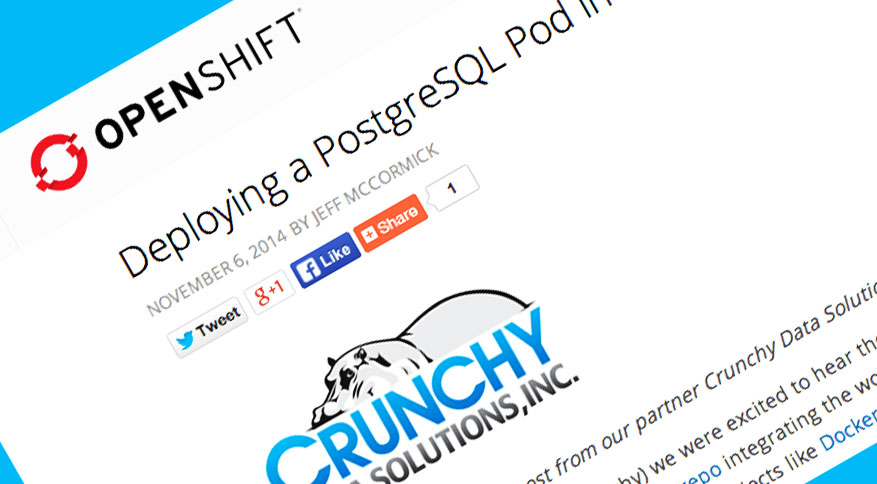Latest Articles
Deploying a PostgreSQL Pod on OpenShiftv3
Crunchy
2 min readMore by this author

Crunchy Data Architect Jeff McCormick's guest post on the Red Hat OpenShit Blog demonstrates how to deploy a PostgreSQL Pod, running as a Docker container, in OpenShift v3 and end up with a deployed solution.
At Crunchy Data Solutions (Crunchy) we were excited to hear the recent announcement from the OpenShift team regarding the new public Origin repo integrating the work Red Hat has been doing for over twelve months in OpenShift Origin and related projects like Docker, Kubernetes, GearD and Project Atomic.
Crunchy has been working with the OpenShift team for some time and witnessed the value proposition of combining PostgreSQL, a leading open source object relational database, and OpenShift first hand by working with enterprise users as they deployed PostgreSQL on OpenShift v2.
In order to advance these enterprise deployments of PostgreSQL on the OpenShift platform, Crunchy has previously collaborated with the OpenShift team to build a High Availability PostgreSQL Cartridge and stand alone PostgreSQL 9.3 Cartridge for OpenShiftv2 and, in anticipation of OpenShiftv3, recently announced a private beta for Crunchy PostgreSQL Manager, a Docker based tool enabling enterprises to build High- Availability PostgreSQL Clusters.
As we began our deep dive into the new OpenShift Origin repo and Kubernetes orchestration, we wanted to pass along our initial learning on how to provision a simple PostgreSQL database on an OpenShift Pod in Kubernetes.
Specifically, in this blog post, we will provide an example of how to deploy a PostgreSQL Pod, running as a Docker container, in OpenShift v3 and end up with a deployed solution.
Continued at the OpenShift blog:
https://blog.openshift.com/deploying-postgresql-pod-openshift-v3/
Related Articles
- Logical replication from Postgres to Iceberg
4 min read
- Hacking the Postgres Statistics Tables for Faster Queries
13 min read
- OpenTelemetry Observability in Crunchy Postgres for Kubernetes
8 min read
- Creating Histograms with Postgres
10 min read
- Introducing Crunchy Postgres for Kubernetes 5.8: OpenTelemetry, API enhancements, UBI-9 and More
4 min read